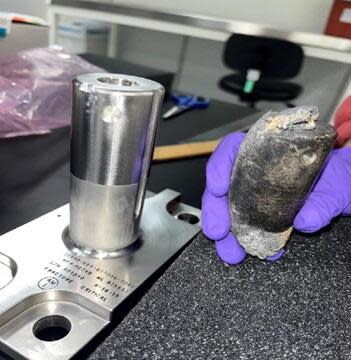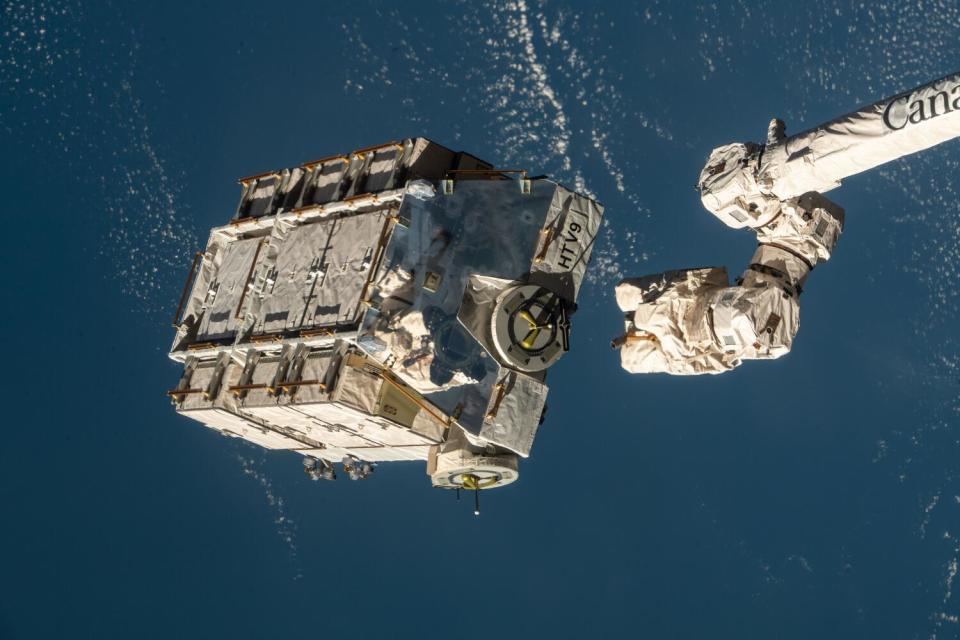NASA takes ownership of space junk that crashed into Florida home

A Florida homeowner was treated to a shocking surprise when a jettisoned piece of metal from the International Space Station crashed into his home in March.
On Monday, the National Aeronautics and Space Administration confirmed the space station was the source of the debris.
The debris "tore through the roof" of Alejandro Otero's home on March 8, passing through two floors and nearly hitting his son, the Naples resident said in a March 15 post on X.
Hello. Looks like one of those pieces missed Ft Myers and landed in my house in Naples.
Tore through the roof and went thru 2 floors. Almost his my son.
Can you please assist with getting NASA to connect with me? I’ve left messages and emails without a response. pic.twitter.com/Yi29f3EwyV— Alejandro Otero (@Alejandro0tero) March 15, 2024
A month later, NASA released a public statement taking responsibility.
"The hardware was expected to fully burn up during entry through Earth’s atmosphere," NASA said. "However, a piece of hardware survived re-entry and impacted a home."
The remaining piece of debris, a stanchion, weighs 1.6 pounds, NASA said. The object is 4 inches tall and 1.6 inches wide.

Increasing amounts of space debris — due to an explosion in the number of satellites launched into low Earth orbit in recent years — have caused concern for satellite operators and occasionally have threatened to hurt people on Earth.
Chinese space junk lit up the Southern California sky earlier this month. Last March, debris from the International Space Station came crashing back to Earth and shocked onlookers in Sacramento.
The space station itself had to close and then reopen several compartments repeatedly in November 2021 when space junk came too close for comfort.
As the prevalence of space junk increases, Smithsonian astronomer Jonathan McDowell told The Times last year, the chances that such debris could hit people or critical infrastructure also increases, though those chances still remain low.
He said he would like to see more safety precautions taken by teams launching such equipment, especially when the debris could include larger pieces.
"NASA remains committed to responsibly operating in low Earth orbit, and mitigating as much risk as possible to protect people on Earth when space hardware must be released," the agency said in a statement.
Times staff writer Grace Toohey contributed to this report.
This story originally appeared in Los Angeles Times.

